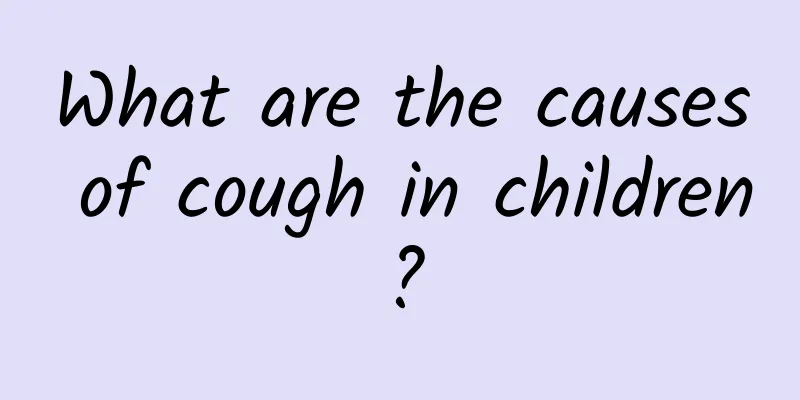What are the clinical manifestations of acute laryngitis in children?

|
What are the clinical manifestations of acute laryngitis in children? Laryngitis is also a relatively harmful disease for adults. It can be said that suffering from laryngitis is quite painful. If a child suffers from acute laryngitis, you can imagine how harmful this disease is. Therefore, we must ensure timely discovery. So what are the clinical manifestations of acute laryngitis in children? Clinical manifestations Acute laryngitis in children is common in infants and young children aged 6 months to 3 years. Due to the anatomical characteristics of the larynx in children, the laryngeal cavity is narrow, the laryngeal cartilage is soft, the submucosal tissue of the epiglottic cartilage, arytenoid cartilage, aryepiglottic folds, ventricular bands and subglottic area is loose, and the mucosal lymphatic vessels are rich. After inflammation, it is easy to swell and cause laryngeal obstruction. Children do not have a strong cough function, and it is not easy to expel the secretions of the larynx and lower respiratory tract, which makes breathing more severe. Therefore, the condition of acute laryngitis in children is often more serious than that of adults. If not diagnosed and treated in time, it can be life-threatening. Signs: 1. It is more common in young children and has an acute onset. 2. There may be varying degrees of fever, hoarseness, barking cough and inspiratory stridor. 3. The throat is congested, the false vocal cords are swollen, and the subglottic mucosa is swollen in a fusiform shape. 4. The symptoms are milder during the day, but worsen at night due to relaxation of throat muscles and blockage of secretions after falling asleep. 5. Laryngeal obstruction is divided into the following 4 degrees: Grade I: The patient is like a normal person at rest, but inspiratory stridor and dyspnea only occur after activity. The lung breath sounds are clear and the heart rate does not change. Grade II: Laryngeal stridor and inspiratory dyspnea occur even at rest. Laryngeal conduction sounds or tubular breath sounds may be heard upon auscultation of the lungs, and the heart rate is relatively fast. Grade III: In addition to the symptoms of Grade II laryngeal obstruction, the patient becomes restless, has cyanosis of the lips, fear and sweating due to lack of oxygen. Auscultation of the lungs reveals significantly reduced breath sounds, dull heart sounds and increased heart rate. Grade IV: After struggling with breathing difficulties, the patient gradually becomes exhausted and drowsy. Due to the inability to breathe, the patient is temporarily quiet, and the three-depression sign is not obvious, but the face is pale and gray. The breath sounds on lung auscultation almost disappear, and only tracheal conduction sounds are left. The heart sounds are dull and weak, and the heart rate is either fast or slow and irregular. Physical examination: congestion in the throat, swelling of the false vocal cords, and fusiform swelling of the subglottic mucosa. Depending on the severity of the lesion, laryngeal striae and inspiratory dyspnea may sometimes occur, and laryngeal conduction sounds or tubular breath sounds may be heard by auscultation of the lungs. |
<<: What should be done to check for acute laryngitis in children
>>: What to do with acute laryngitis in children
Recommend
What are the preventive measures for hand, foot and mouth disease?
What are the prevention and treatment measures fo...
What is the reason for children's repeated coughing and sputum? There are 3 common causes of children's repeated coughing and sputum.
It is very common for children to have repeated c...
Will newborns with physiological jaundice be sleepy? You should know the specific symptoms of physiological jaundice in newborns
Neonatal physiological jaundice is a common sympt...
How to take care of children with hand, foot and mouth disease? How to take care of hand, foot and mouth disease to get better quickly?
Hand, foot and mouth disease is a disease that ca...
Is there a good hospital for polio?
Polio is a very scary disease. Many people wonder...
What to do if children are malnourished
If a child's daily diet is improper, it is ea...
Why should children with pneumonia receive intravenous infusion?
Regarding pneumonia, many mothers still think it ...
The main symptoms of hand, foot and mouth disease
Hand, foot and mouth disease is a common childhoo...
What is the standard for curing congenital heart disease in children?
When it comes to congenital heart disease in chil...
What should I do if my baby has indigestion? What are the ways to deal with my baby's indigestion?
Indigestion is a common problem in infants. Indig...
Symptoms of polio patients
Severe polio can cause paralysis in children. If ...
What causes patent ductus arteriosus in infants?
Patent ductus arteriosus in infants is caused by ...
How to store human albumin? Contraindications of human albumin
Malnutrition is a common disease. Although malnut...
What to eat for stunted growth? Eating more of these 4 foods can help treat stunted growth
For children with developmental problems, parents...
The correct diet for children with diarrhea
Autumn is drier and is also a season when viruses...









